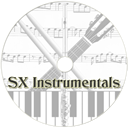Description | At a time when Roland was doing well with their Juno-series, KORG countered with a poly-synth of their own in 1983 with the Poly-800. The Poly-800 was comparable to the Juno-106, at the time, with respect to the fact that musicians now had access to affordable programmable polyphonic analog synthesizers (it listed for under $1,000) with memory storage, stable DCO (digitally controlled oscillator) and a new state-of-the-art technology called MIDI (although there was no SysEx implementation yet).
The Poly-800 is an eight-voice instrument (two more than the Juno series) with 64 memory patches (half of what the Juno-106 offered) and up to 50 editable parameters! Like the Juno, the Poly-800 had one DCO per voice, although it did feature a Double mode in which the oscillators could be stacked up for a fuller sound and only four voices of polyphony. The analog filter is a 24dB/oct low-pass which is shared by all voices (the Juno has separate filter chips for each voice). There's also a stereo chorus effect, chord memory, a simple built-in sequencer, three digital envelope generators (for the oscillators, the noise generator and the filter), and a funky joystick used to adjust the pitch, modulation and the filter.
Unlike the Juno, which was still a “studio” instrument, the Poly-800 was built for the performer. With a light-weight plastic case (only 10 lb.), a couple low-profile sliders/knobs and only 49 keys, the Poly-800 can run on batteries and has guitar strap pegs so it can be worn like a keytar. A less common reversed color keys model was released for a unique look as well.
|





